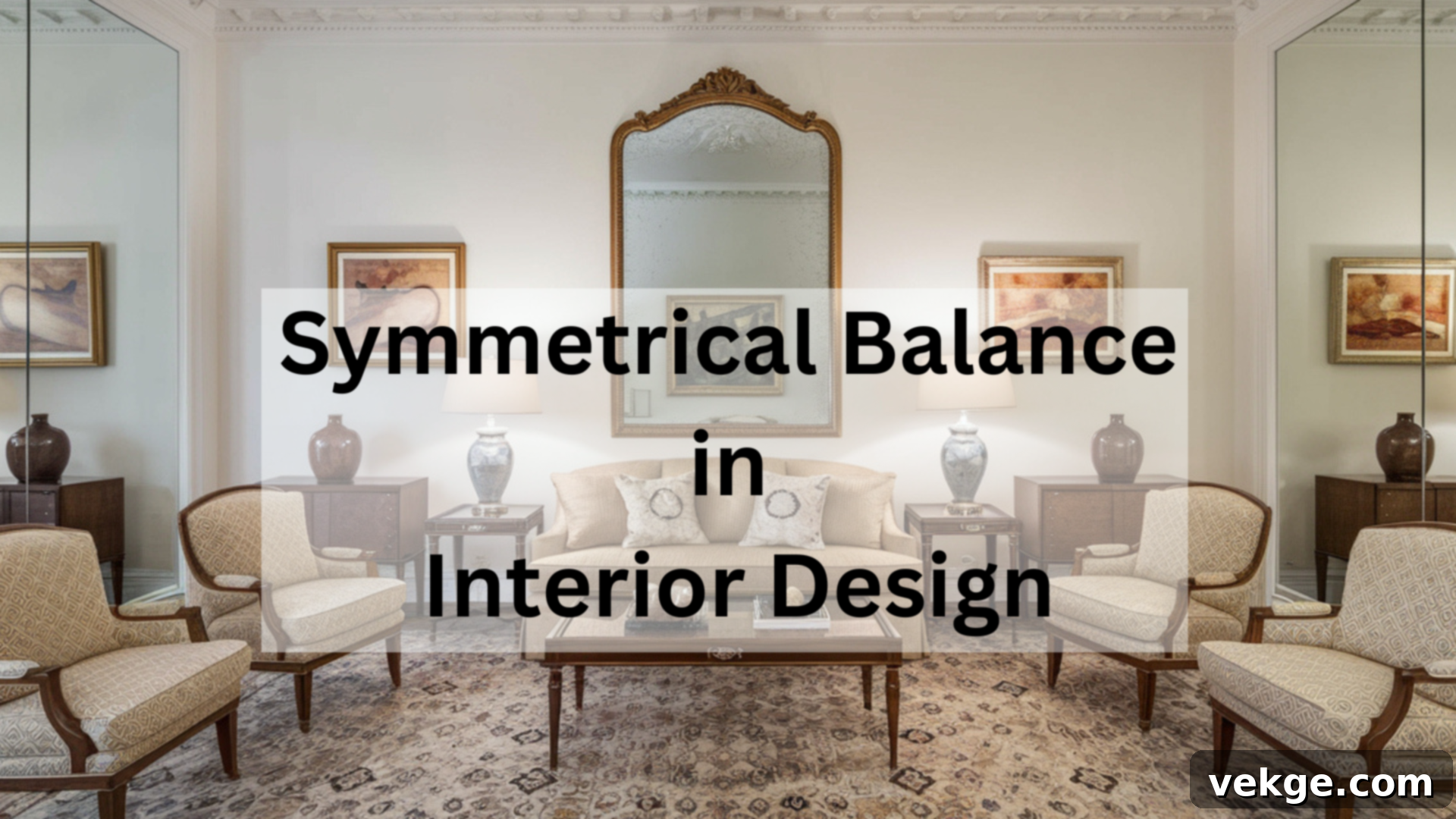The Art of Symmetrical Balance: Achieving Harmony and Order in Your Home Design
Symmetrical balance is a foundational principle in interior design, revered for its ability to infuse any space with a profound sense of harmony, order, and calm. It’s a design strategy centered around the strategic placement of elements, where objects on either side of a central axis mirror each other in terms of shape, size, style, or visual weight. This creates a visually satisfying and inherently peaceful environment that resonates deeply with our innate desire for structure.
Far from being about rigid perfection, symmetrical balance is about crafting a room that feels intentionally composed, well-organized, and incredibly inviting. Whether you’re placing matching sofas to flank a fireplace in a grand living room or simply arranging identical lamps on each side of a bed, the deliberate use of symmetry builds a serene and aesthetically pleasing atmosphere. It’s a technique that brings an immediate sense of stability and comfort to any interior.
In this comprehensive guide, we will delve into how symmetrical balance enhances various rooms throughout your home, explore its many benefits – including its significant psychological impact – and equip you with the knowledge to deftly avoid common design pitfalls. Get ready to transform your living spaces into havens of balance and beauty.
What is Symmetrical Balance in Interior Design?
At its core, symmetrical balance in interior design is an organizational approach where a space is arranged around an imaginary central line or axis. This method generates a mirror-like effect, where elements on one side are either identical or closely matched to those on the opposite side. This visual replication is incredibly effective at delivering stability, formality, and a strong sense of order within a room.
To visualize this, imagine folding a piece of paper directly down the middle: every detail on one half aligns perfectly with its counterpart on the other. In the context of interior design, this translates to carefully arranging furniture, decor, and even architectural features so that one half of a room distinctly reflects the other. For instance, a centrally placed fireplace might be flanked by two identical armchairs, or a long hallway might feature a series of matching console tables and artworks on opposing walls.
The power of symmetry lies in its psychological effect. Our brains are naturally drawn to patterns and order, finding comfort and ease in predictable arrangements. When a space exhibits symmetrical balance, it reduces visual clutter and provides a clear, logical pathway for the eye to follow, fostering a sense of calm and intentionality. This technique isn’t about enforcing rigid sameness or creating sterile environments; rather, it’s about strategic placement that results in a harmonious, elegant, and inherently pleasing atmosphere that feels both deliberate and welcoming.
Why Symmetry Matters: The Benefits of Symmetrical Balance
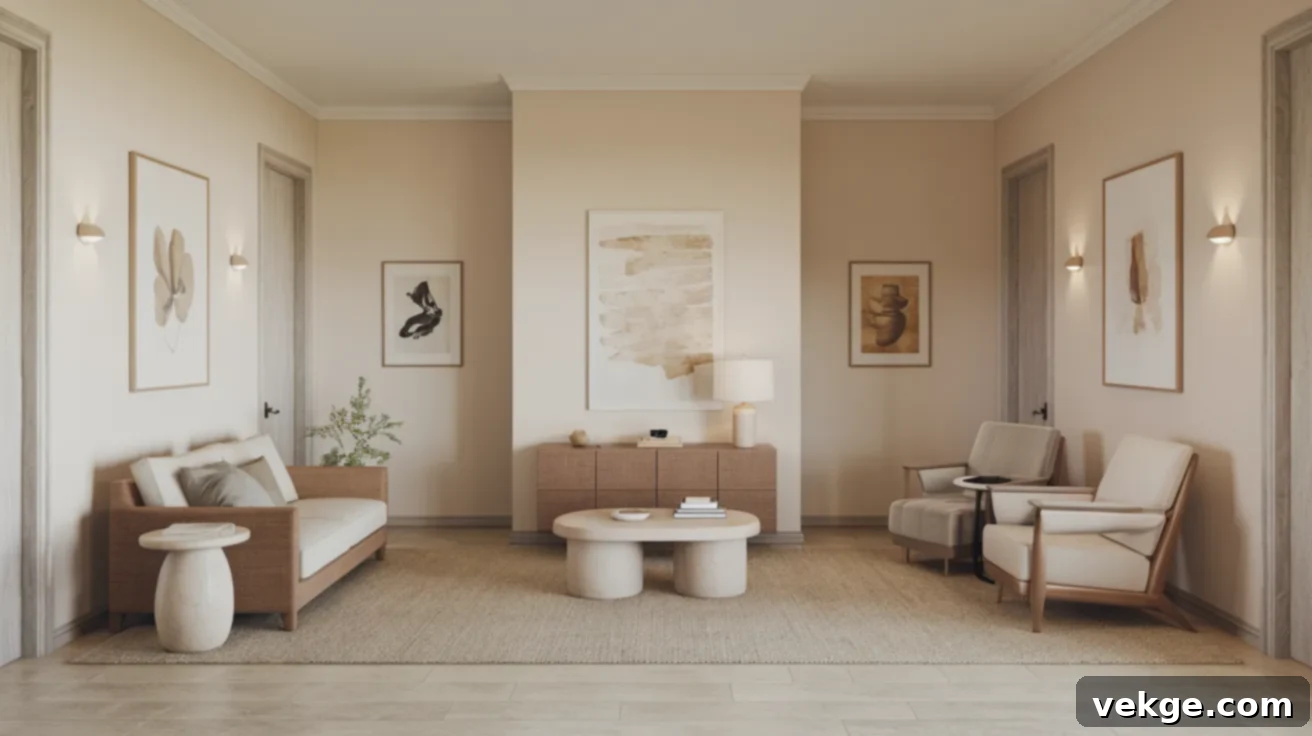
Symmetry possesses an inherent appeal that speaks to something fundamental within our psychological makeup. When we step into a symmetrically balanced space, our minds instinctively respond with feelings of comfort, stability, and ease. This isn’t mere coincidence; it’s deeply rooted in our innate human appreciation for order, predictability, and safety. Symmetrical designs inherently create a visual calm that actively helps to reduce stress, promote relaxation, and cultivate a profound sense of well-being within interior environments. It’s a design choice that not only looks good but also makes us feel good.
Psychological Impact Of Symmetrical Balance
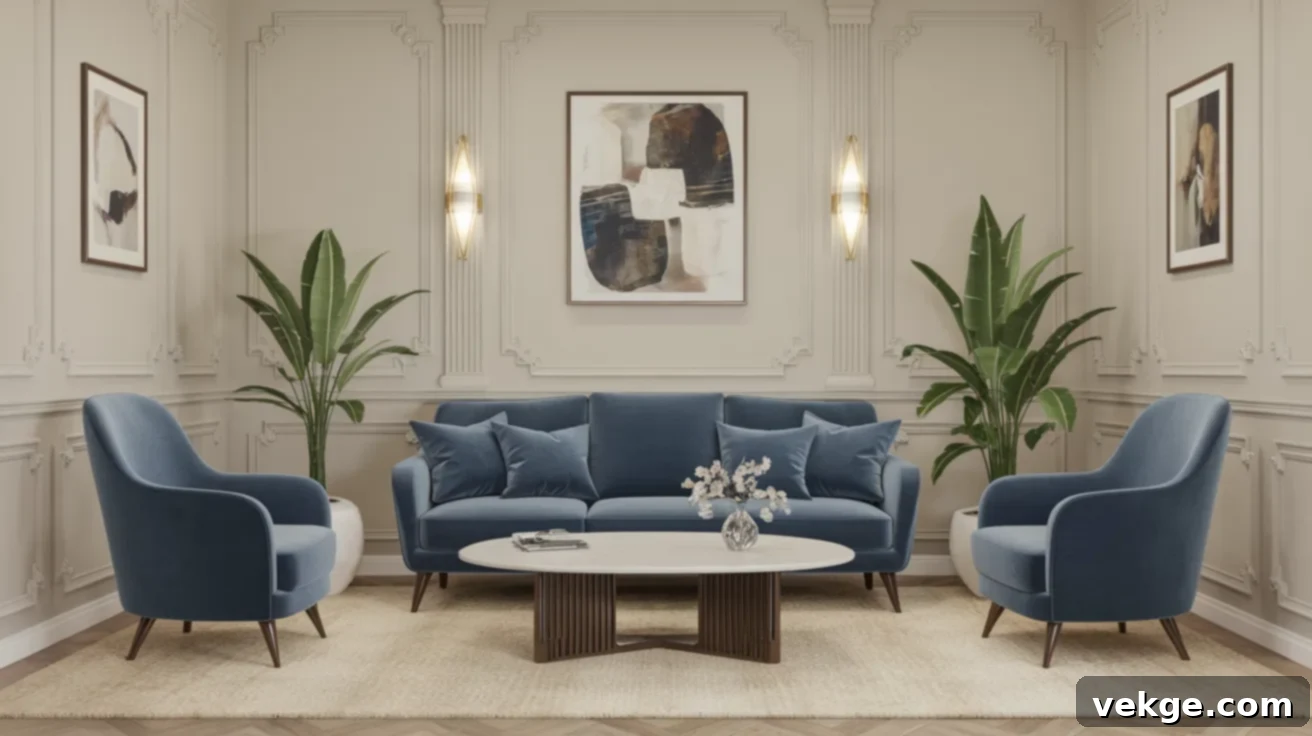
The psychological benefits of symmetry extend far beyond simple aesthetics, impacting our mood and mental state in tangible ways. Balanced spaces provide a deep-seated sense of stability and control, offering a respite from the often chaotic and unpredictable nature of the outside world. In an era where information overload is common, a symmetrically designed room acts as a peaceful retreat, a sanctuary where the mind can find immediate relief in clear, predictable patterns. Each element seemingly has a designated place and purpose, contributing to an overall sense of tranquility.
This deliberate approach to design is not about creating sterile, uninviting, or overly rigid environments. Instead, it’s about thoughtfully crafting spaces that feel both intentional and profoundly serene. By appealing to our brain’s natural inclination for order, symmetry minimizes visual discord, allowing us to relax and feel grounded. It reduces the cognitive load required to process a space, making it feel effortlessly comfortable.
While not every single corner or item in a home requires perfect, mirror-image symmetry, understanding and applying its fundamental principles empowers designers and homeowners alike to create more thoughtful, harmonious, and emotionally resonant environments. The ultimate objective is to strike a balance that feels genuinely natural and comfortable, rather than one that appears forced, stiff, or overly calculated. It’s about finding that sweet spot where order meets organic flow.
How to Achieve Symmetrical Balance in Different Rooms
Implementing symmetrical balance effectively across various rooms in your home demands a thoughtful and adaptable approach, always considering each space’s distinct function, aesthetic goals, and inherent characteristics. By mastering the art of creating balance in different areas, you can consistently craft cohesive, visually pleasing, and incredibly comfortable interiors throughout your entire living environment.
Living Room
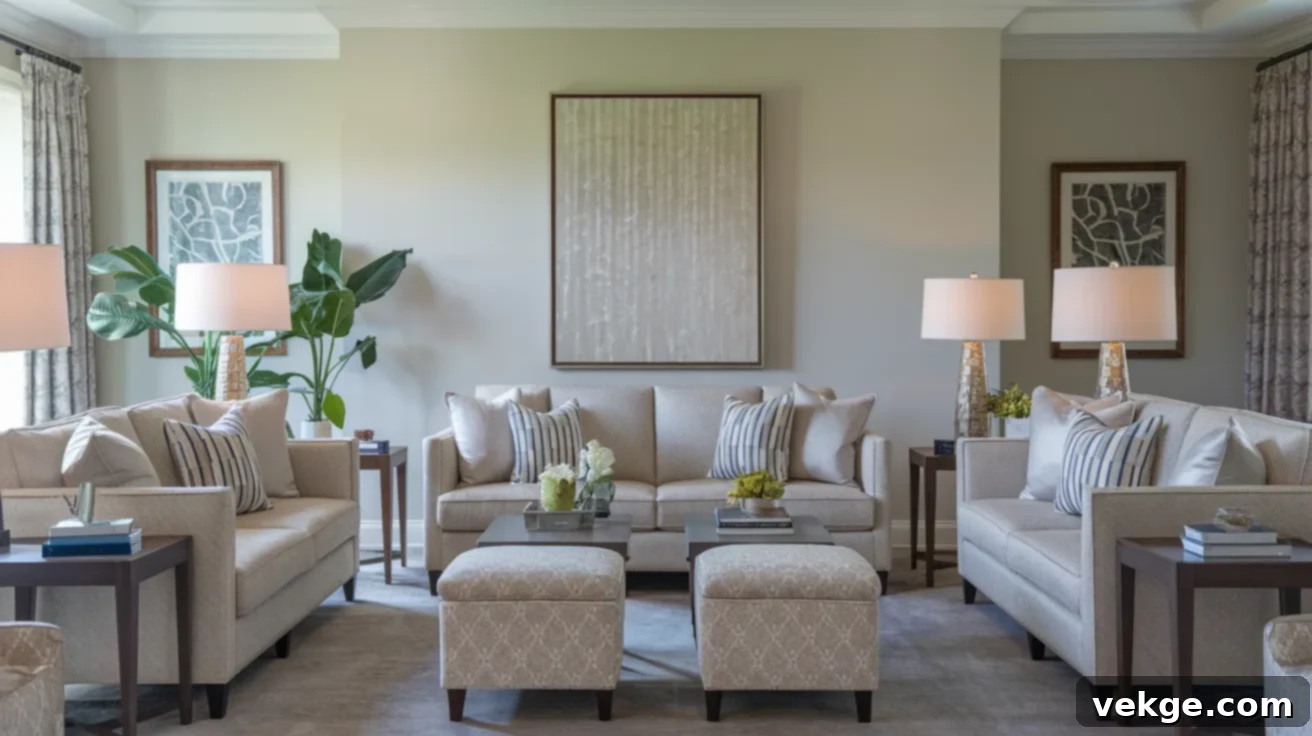
The living room often serves as the heart of the home and presents an ideal canvas for showcasing symmetrical design. Begin by establishing a strong central focal point, such as a grand fireplace, a prominent window, or an elegant coffee table. Then, position matching sofas, armchairs, or chaise lounges directly opposite each other, or flank the focal point with a pair of identical seating arrangements. Enhance this primary arrangement by adding identical side tables, each topped with matching table lamps, on either side of your main seating. To further amplify the mirror-like effect, consider hanging two similarly sized and framed pieces of artwork or decorative mirrors on opposing walls or above the identical side tables. Even the placement of an area rug can contribute to symmetry by defining the space with its balanced pattern or central positioning, grounding the entire arrangement.
Bedroom

In the bedroom, symmetry is a powerful tool for fostering an atmosphere of profound calm, tranquility, and relaxation—essential for a restful sleep. Your bed naturally serves as the central anchor. Position matching nightstands or bedside tables on both sides of the bed, ensuring each is equipped with identical table lamps or wall sconces for balanced illumination. Above the nightstands, hang matching artwork, mirrors, or sconces to reinforce the balanced visual. Consider framing the bed evenly with floor-length curtains that draw the eye outward, and complete the symmetrical styling with matching decorative pillows, throws, or even a pair of identical benches at the foot of the bed. This creates a serene, harmonious retreat.
Dining Room
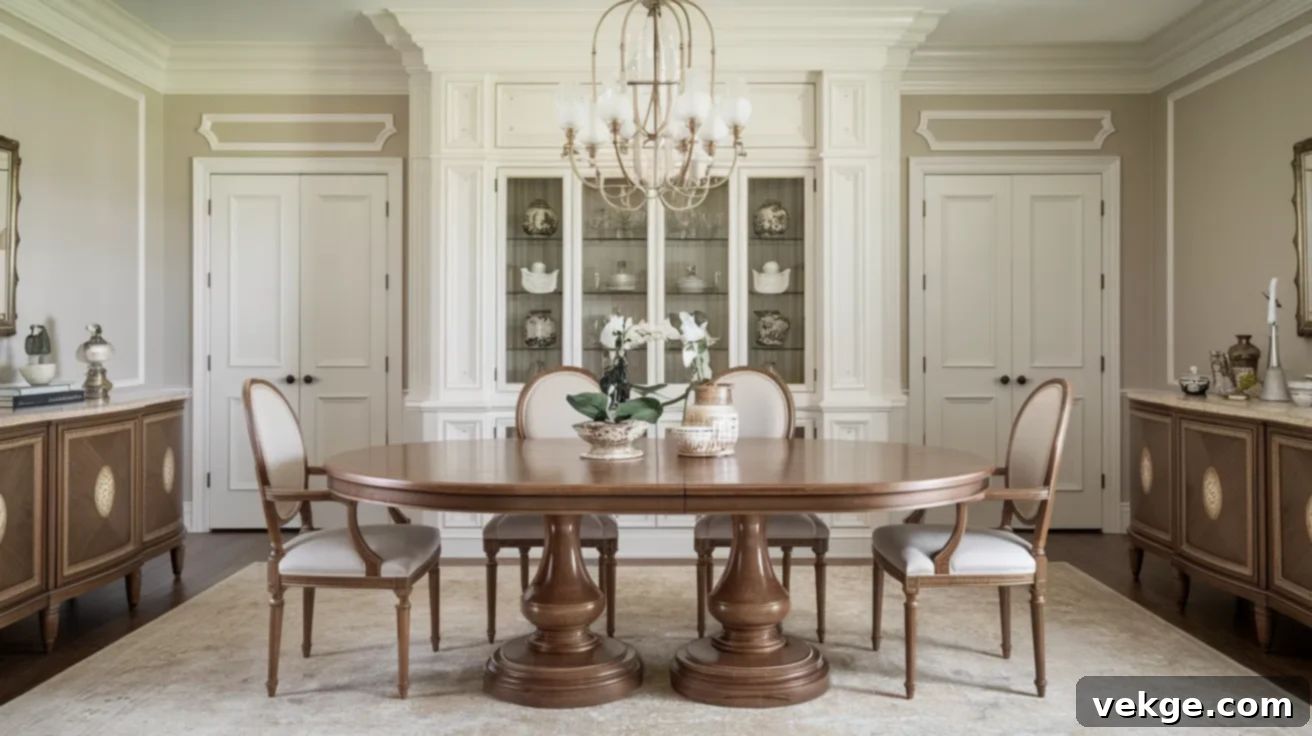
A symmetrically designed dining room immediately conveys an air of timeless elegance, formality, and impeccable order. The dining table should be perfectly centered in the room, with dining chairs placed evenly and consistently on all sides to create visual equilibrium. A chandelier or pendant light fixture hung directly above the table’s absolute center point further solidifies this balance. To enhance the symmetrical experience, position matching buffets, sideboards, or display cabinets on either side of the room, often against the longer walls. Identical wall art, large mirrors, or symmetrical window treatments on opposing walls will beautifully reinforce the room’s cohesive and balanced feel, making it an ideal space for entertaining.
Home Office
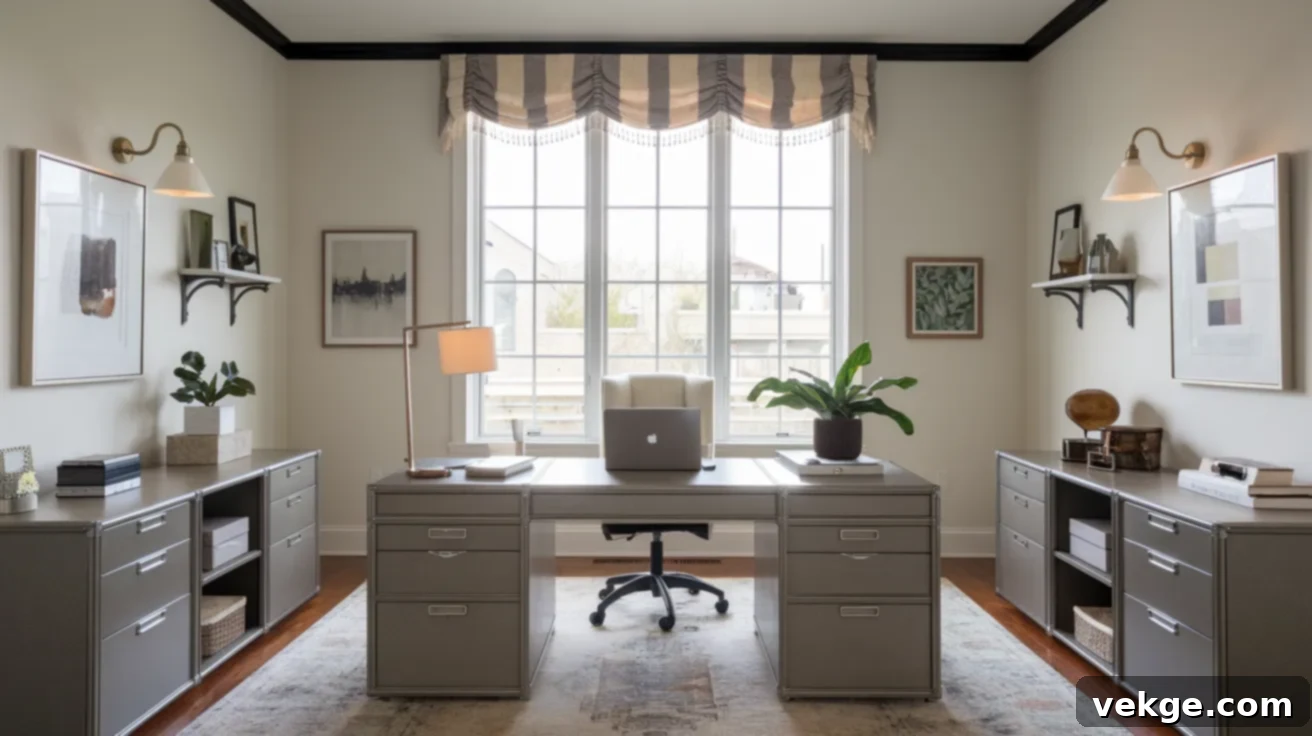
In a home office environment, symmetry is incredibly beneficial for cultivating a focused, productive, and organized workspace. Position your desk centrally, acting as the room’s main focal point. Flank it with matching shelving units, bookcases, or filing cabinets on each side to create a balanced storage solution. Utilize identical task lighting, such as desk lamps, on either side of your workspace. Create a balanced backdrop with coordinated artwork, bulletin boards, or even symmetrical plant arrangements. Ensure that chair placement, whether it’s your primary office chair or visitor chairs, maintains the room’s visual equilibrium, contributing to a sense of calm efficiency that minimizes distractions.
Kitchen
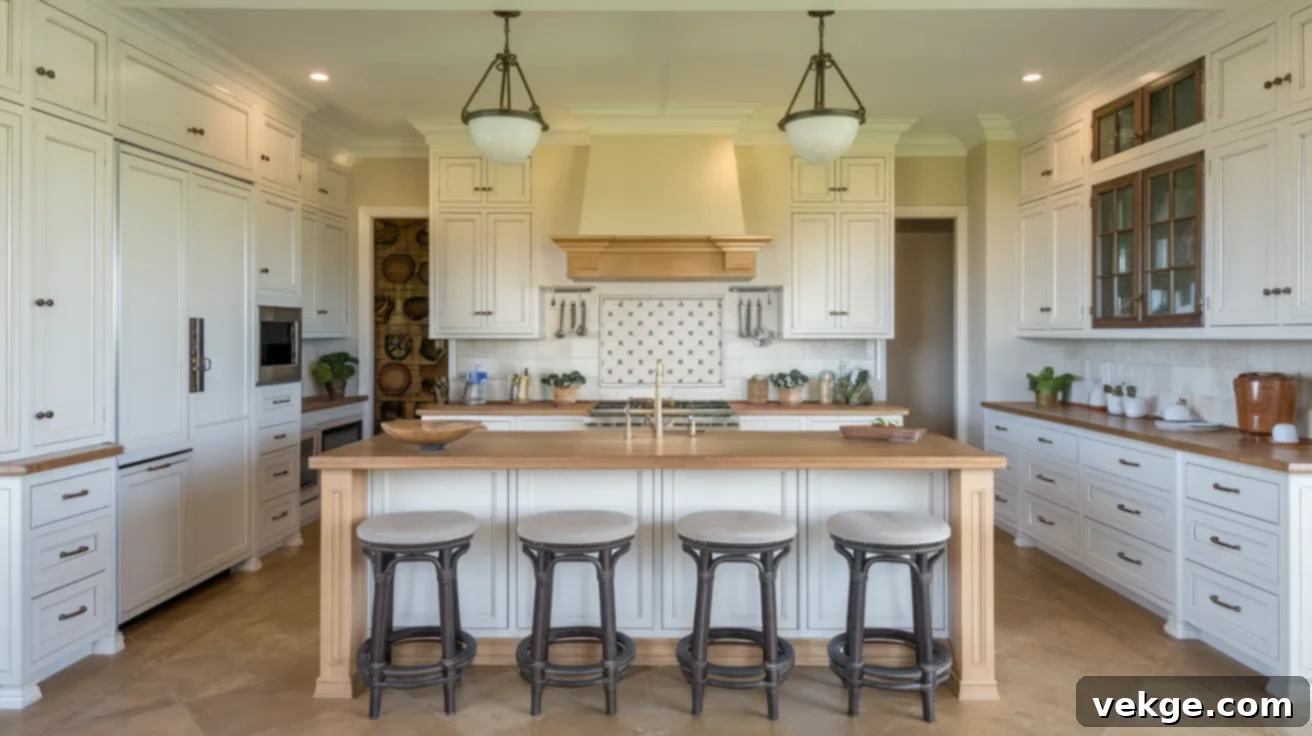
Symmetry in the kitchen brings a much-desired sense of order, efficiency, and sophisticated design. If your kitchen features an island, ensure it is perfectly centered and balanced by matching bar stools or seating arrangements on opposing sides. A key aspect of kitchen symmetry lies in the alignment of upper and lower cabinets, ensuring even spacing, consistent design, and matched hardware. Consider placing a range hood or stove as a central element, flanked by identical cabinetry. Hang matching pendant lights or sconces above the island or counter areas. Creating a balanced backsplash design, perhaps with a central motif mirrored on either side, can draw the eye evenly across the space, making the kitchen feel both functional and beautifully composed.
By thoughtfully applying these timeless principles of symmetrical balance, you have the power to transform individual rooms into profoundly harmonious, well-balanced, and aesthetically pleasing spaces that feel both intentionally designed and supremely comfortable to inhabit.
Balancing Symmetry with Other Design Principles
While often misunderstood as a rigid or even restrictive concept, symmetry is, in fact, an incredibly flexible and dynamic tool. When applied with nuance, it possesses the power to elevate rooms from merely ordinary to truly extraordinary, serving as a structured foundation upon which other design elements can playfully build.
The Interplay of Design Elements
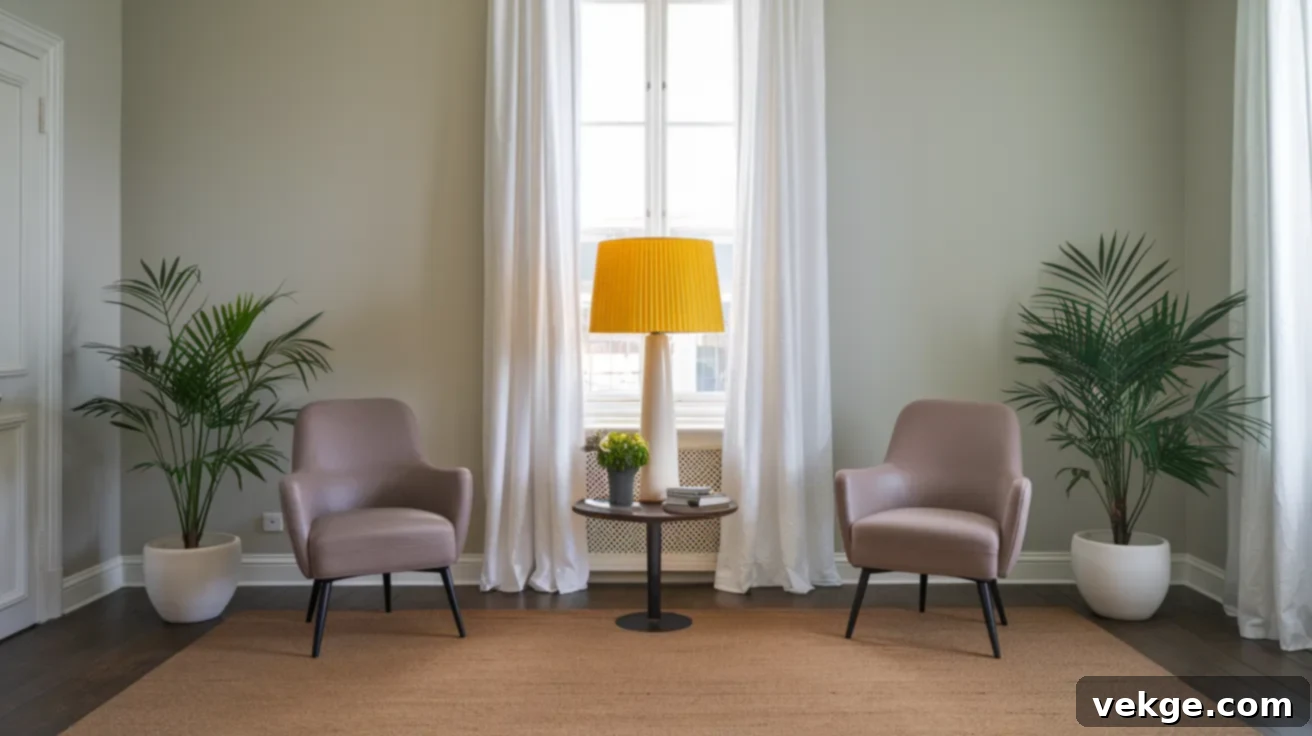
Symmetrical balance should never be viewed as an isolated design concept but rather as a powerful foundational technique that interacts dynamically and synergistically with other fundamental design principles. While symmetry provides an essential layer of stability, order, and formality, its true transformative potential is unlocked when it is thoughtfully combined and contrasted with complementary elements such as contrast, proportion, rhythm, and even a touch of asymmetry.
Contrast and Balance
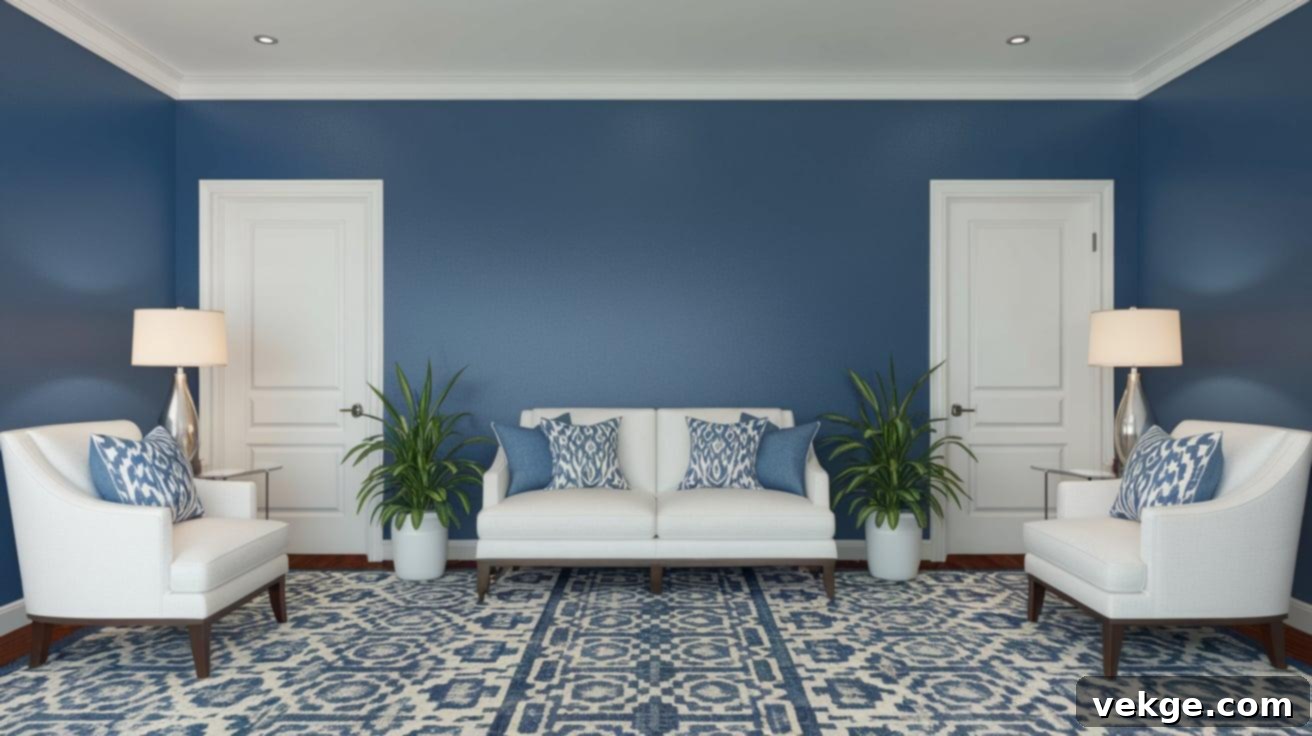
The mastery of interior design often lies in creating a nuanced and engaging dialogue between different design principles. Symmetry offers an incredibly strong and structured foundation, but introducing subtle contrasts can prevent spaces from feeling overly rigid, static, or predictable. For example, a perfectly symmetrical room can be beautifully softened and made more engaging by incorporating unexpected color accents, varied textures on identical elements, or even by placing a unique, small decorative object on one side while maintaining overall visual balance. This interplay ensures the room feels cohesive yet dynamic.
Proportion and Harmony
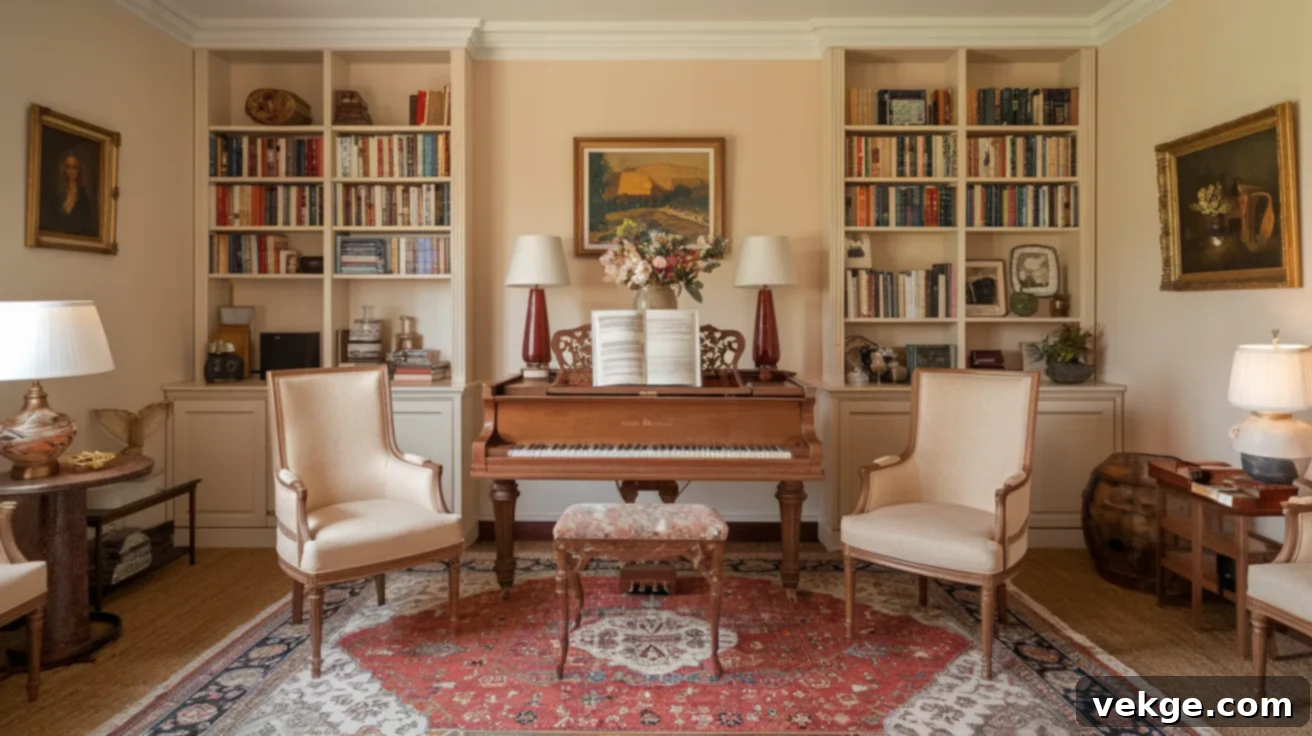
Proportion, or the size relationship between objects and spaces, plays an absolutely critical role in how symmetry is perceived and how effective it feels. A large, robust, and centrally placed piece of furniture—like a substantial dining table or a grand headboard—can powerfully anchor a symmetrical design. Smaller, complementary elements strategically placed on either side then create visual equilibrium without necessarily being identical in size, but rather in visual weight or style. This thoughtful approach ensures that the room feels intentionally designed and harmonious, without appearing excessively calculated or forced, allowing for a natural, comfortable flow.
Rhythm and Flow
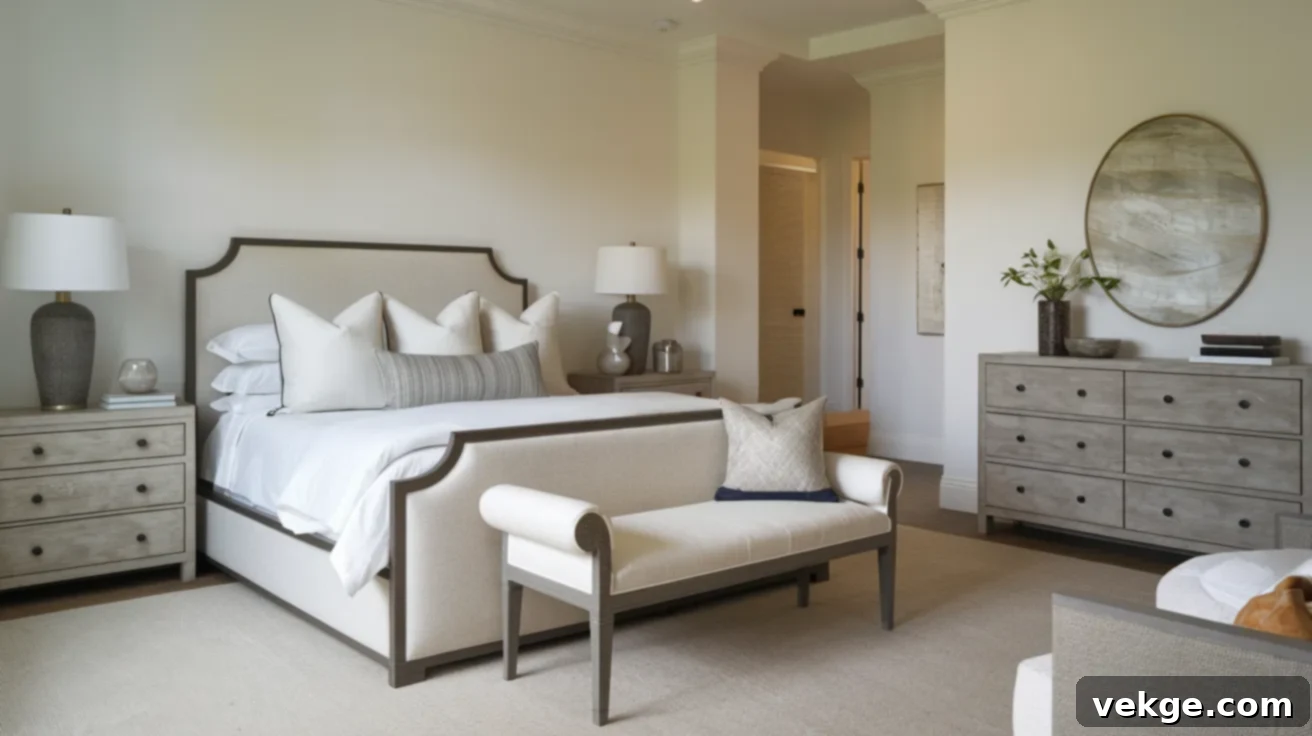
Rhythm in design refers to the way our eye is led through a space, and it can be beautifully achieved and enhanced through symmetrical arrangements that guide the eye smoothly and predictably. Repeated patterns, aligned furniture, and mirrored elements create a natural visual flow that feels both comfortable and intrinsically engaging. While a consistent rhythm is calming, incorporating occasional, subtle asymmetrical elements or variations within a largely symmetrical scheme can add unexpected visual interest, a touch of personality, and cleverly prevent any sense of monotony, keeping the design fresh and inviting.
Color and Texture
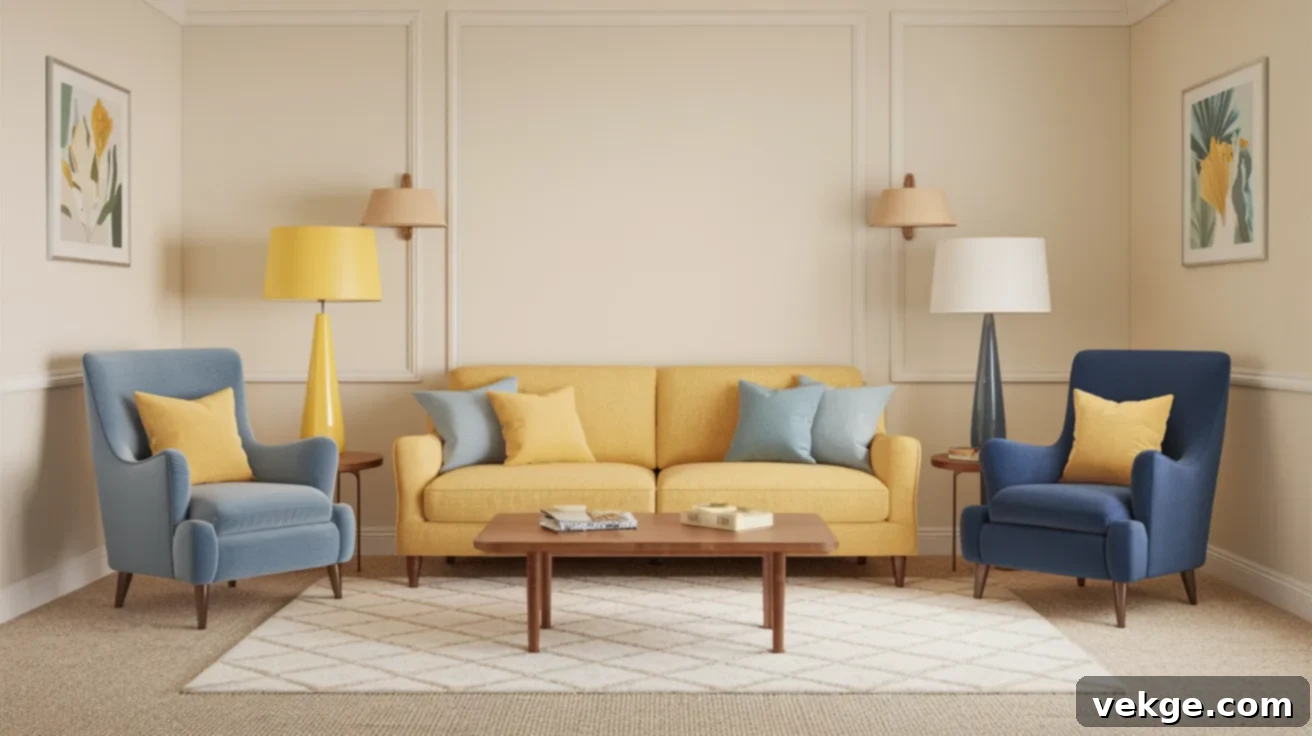
Color and texture offer expansive opportunities to creatively play with and reinforce symmetrical balance. A room with a meticulously mirrored layout can truly come alive and gain depth through the strategic use of complementary colors or contrasting materials. Imagine identical chairs upholstered in the same fabric but adorned with throw pillows in a contrasting hue on each side. Matching light fixtures, carefully chosen accent lights, and symmetrically placed artworks can further enhance the overall composition, adding layers of visual richness. The careful selection of textures—smooth alongside rough, matte against glossy—can also reinforce symmetry while adding tactile appeal.
Ultimately, the key to truly successful design is to view symmetry not as an immutable, strict rule, but rather as a flexible, guiding principle. The most compelling interior designs skillfully embrace both structure and creativity, finding that delicate, masterful balance between intentional order and delightful spontaneity. It’s about creating a space that feels lived-in, layered, and uniquely yours, while still benefiting from the inherent elegance of balance.
Common Mistakes to Avoid with Symmetrical Balance
While symmetrical balance is a powerful design tool, it can quickly transform from an asset into a design liability if overdone or misapplied. The most prevalent trap designers and homeowners fall into is creating spaces that feel more like sterile, impersonal showrooms than warm, inviting, lived-in homes. Remember, perfect matching doesn’t automatically equate to great design; often, an obsession with exact replication can lead to rooms that feel stiff, lifeless, and devoid of personality or warmth.
Another critical area where mistakes occur is in overlooking proper proportions and spacing. While symmetry calls for mirrored elements, forcing furniture into exact, rigid alignment without considering the room’s scale or the flow of traffic can make a space feel awkward, uncomfortable, and impractical. The true goal is to achieve visual balance and equilibrium, not mathematical precision. Introducing some subtle variation in height, texture, or the exact spacing between elements can keep a space feeling natural, dynamic, and genuinely inviting, preventing it from appearing too staged.
Clutter is arguably the quickest and most effective way to undermine and destroy even the most meticulously planned symmetrical design. In a balanced room, each item should ideally have a clear purpose and contribute meaningfully to the room’s overall sense of order and serenity. Overfilling spaces with too many decorative objects, or adding an excessive number of matching elements, can inadvertently turn carefully planned balance into visual chaos. The simplicity and clarity that symmetry aims to achieve are instantly lost amidst excessive items, leaving the room feeling overwhelmed and disorganized rather than peaceful.
Finally, neglecting functionality for the sake of symmetry is another common pitfall. While visual appeal is important, a room must first and foremost be practical and comfortable to live in. Don’t sacrifice a comfortable seating arrangement or convenient access to essentials just to achieve a perfect mirror image. Thoughtful design integrates both form and function seamlessly, ensuring that the beauty of symmetry enhances, rather than hinders, the usability of your space.
Conclusion
So, let’s recap the core message: symmetrical balance in interior design is fundamentally not about crafting a boring, rigid, or museum-like space. Instead, it’s a sophisticated design principle focused on making your home feel intentional, deeply comfortable, and profoundly reflective of your unique personal style. We’ve thoroughly explored how a thoughtfully balanced design approach can effortlessly transform rooms from chaotic and overwhelming to beautifully calm and composed, clearly demonstrating that a little strategic arrangement and mindful placement can go an incredibly long way in enhancing your living environment.
Feeling inspired and ready to give it a try in your own home? There’s no need to overhaul everything at once. Start small and experiment with accessible changes. Perhaps begin by pairing up some side tables around a central sofa, perfectly centering a piece of artwork above a console, or simply playing with the placement of matching lamps on either side of a bed. These minor adjustments can yield surprisingly significant results, creating an immediate sense of order and visual appeal.
Remember not to stress about achieving absolute perfection; instead, think of symmetry as a flexible and supportive friend in your design journey. It’s a tool that’s there to help your space not only look amazing but also feel incredibly amazing to inhabit. Your home is your most personal canvas, offering endless opportunities for creativity and self-expression. So, have fun experimenting, trust your instincts, and actively seek out that sweet spot of balance that genuinely makes you feel right at home, surrounded by harmony and beauty.
Frequently Asked Questions
How can I achieve symmetry in a room with odd-shaped furniture?
When dealing with uniquely shaped furniture, focus on achieving visual weight and overall balance rather than striving for exact replication. You can create symmetry by using similar colors, comparable heights, or items with equivalent visual volumes. For example, a large, uniquely shaped armchair on one side could be balanced by a smaller armchair paired with a tall plant or a slender floor lamp on the opposite side, matching its visual ‘heft’.
Can symmetry be used in outdoor spaces too?
Absolutely! Symmetrical design principles are incredibly effective and widely used in outdoor environments. Gardens can feature symmetrical layouts with matching planters, pathways, and seating areas. Patios benefit from balanced arrangements of outdoor furniture, while landscape planning often employs symmetry in the placement of trees, shrubs, and water features to create a formal and serene atmosphere.
Is it necessary for every item in a symmetrical room to match exactly?
Not at all; in fact, exact duplication can sometimes make a room feel too stiff. The essence of symmetry is about creating visual balance and harmony, not identical duplicates. You can achieve this by using items that share similar shapes, colors, textures, or overall visual weight, even if they aren’t precisely the same. For instance, two different chairs of similar scale and color can balance each other visually.
Can I combine symmetrical and asymmetrical elements in a single room?
Yes, absolutely! This is often where the most interesting and dynamic designs emerge. A predominantly symmetrical foundation (like a symmetrical furniture arrangement) can be softened and made more inviting by introducing asymmetrical accent pieces. For example, a symmetrical sofa arrangement could feature a single, unique piece of artwork on one side, or an odd number of decorative pillows. This approach adds personality and prevents the space from feeling too rigid while still benefiting from the inherent calm of symmetry.
